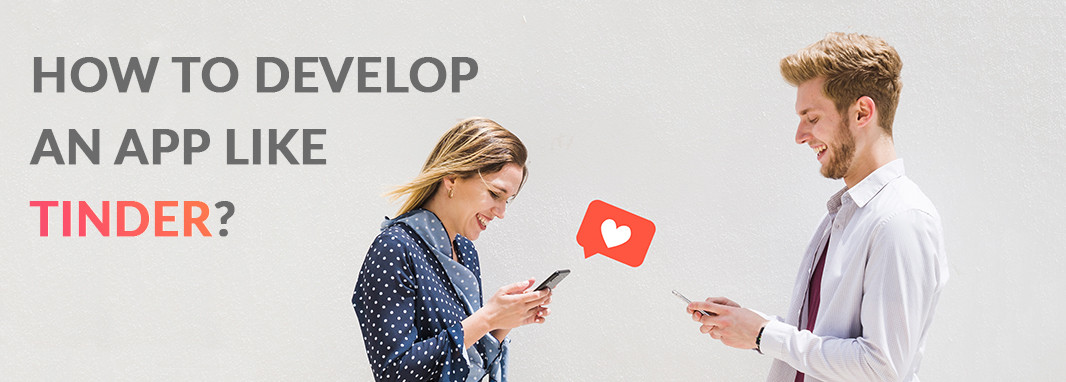Tinder is an absolute dating app market leader, and we will go through the key reasons for its success. There's no magic pill for an app to gain millions of users, but there are specific points you can't ignore on your way to building a successful product. Let's go through the things Tinder did, then pay attention to the industry best practices in general, and apply all that to your future killer product.
As the market-leading dating app, Tinder is available in 30 languages and is in use across nearly 200 countries. It receives 1.6 billion swipes per day, with 20 billion matches and facilitates a million real-world dates every week! It's also super-profitable, with 4.1 million paying subscribers and an estimated $800 million in revenue in 2018 alone.
The online dating industry itself is thriving, with dating services expected to be worth a whopping $3.2 billion by 2020. Annual revenue topped $1.6 billion in China alone, and that was three years ago back in 2016. As a true market leader Tinder is notable for being able to maintain its market-leading position over time.
And so now that we know just how successful Tinder is, let's jump on in and take a look at why it's so popular and what we can learn from it.
Why is Tinder so popular?

Reason #1: It is simple
Tinder became so popular for the same reasons why Uber and Airbnb did once: it allows doing something in a simple way. As for dating, Tinder users can build relationships with someone in their local area. Tinder puts people's faces front and center so that users can immediately tell whether someone likes them.
Reason #2: Swiping
The ability to left swipe and right swipe between people also helped, because that allowed people to use a dating app at scale for the first time. The app also has a smart monetization strategy, allowing users to pay for a membership that gave them access to additional features. Importantly, while these extra features gave paying users an advantage, they didn't put free users at a disadvantage. Otherwise, Tinder would have risked driving people away.
Reason #3: They were the first
Tinder made it first. It was the first dating app able to provide users with such a feature-rich mobile app. The approach was so successful that it allowed them to establish a stranglehold on the market, and so even after other companies tried to imitate the model, Tinder had a considerable head start. And because of its significant head start, it became a self-fulfilling prophecy — if you wanted to use the app with the most users, you had to sign up to Tinder. It just continues to get bigger and bigger and bigger.
That doesn't mean other apps can't compete with it, though. It means they're coming up against the stiff competition. While learning what works and what doesn't for Tinder will be a perfect start, but to gain loyal users, one needs a little luck.
What are the features that Tinder is best know for?

Now that we've established that Tinder is such a success thanks to its features let's explore them in a more detailed way. Here are the basic ones:
Profile
Almost every dating app includes the ability for users to create a short profile about themselves in which they can list their interests and expectations.
It isn't even a unique feature to dating apps, and most users have already got used to it from social networks.
If we look from a business marketing perspective, Instagram ranks much higher when it comes to having a profitable business online you should only having a large number of Instagram followers to make it happen.
Geolocation
It's the core thing about Tinder. When you explore the profile of nearby users, the app tells you how far away they are. You can adjust the geolocation filter and specify the distance you want to look for potential matches.
Discovery settings
The discovery settings section of the app allows you to determine who gets recommended to you as you're swiping through other users. You can specify where you live, the maximum distance people should live within, the gender you're interested in, and the age ranges you're looking for.
Swipe
Swiping is what made Tinder iconic, and there's a good reason for that. It made it super easy for people to browse the site while making the app itself incredibly addictive. Left and right-swipingecame so popular that they are used as slang terms for liking or not liking someone, and they were also emulated by all sorts of other apps.
Matchmaking
One of the things that helps Tinder stand out from the crowd is the fact that the app itself goes out of the way to make proactive matchmaking suggestions. Paid users are able to see if other people have liked them. Meanwhile, features like Super Likes make it much easier for people to express their interest.
Private chat
Private chat is vital for an app like Tinder because the whole point is for it to facilitate one-to-one messaging between two people who are interested in each other. App users can take advantage of Tinder's private chat functionality to get to know each other before they arrange to meet up for real.
Push notifications
Push notifications are designed to bring people back into the app, and Tinder uses them to significant effect to let their users know when they have a new match, a new message or a new powerup. With dating apps in particular, many people like to get notified once they receive a match — and who can blame them?
Facebook login
Integrating Facebook login makes it easier for people to sign up and synchronize their accounts, easily importing photos and information. Users can also share their Instagram photos on their profile. In short, it makes it easier to use the app, and that makes people more likely to stick with it.
How much does it cost to build a Tinder clone?

How long is a piece of string? Building an application of any type is difficult to price because it depends upon the exact team and their rates. You'll also need to factor in marketing costs and any ongoing costs caused by the infrastructure you'll need to host it. Although cloud computing has changed things for the better and made it easier for app developers to pay only for the resources that they need.
Still, if you're looking to create an app like Tinder, you can expect to pay somewhere around $50,000 for a fully-fledged, custom-built Tinder-style application that's built with your exact specifications in mind. This is based on the Eastern European average hourly rates of $50/hour, and so you can expect to pay more if you work with local developers. Check Top App Development Companies Of 2020 list to chose developer for your app.
One thing that not everyone thinks of when they think about how to make an app like Tinder is that Tinder is available on multiple platforms. As a general rule, it'll cost the same amount of money to build an app on Android as it will on iOS, and if you want to develop for both of platforms, your budget will double accordingly. And because they're two different platforms, there are no savings due to economies of scale.
You can cut corners to bring the costs down, but what you buy cheaply, you pay dearly. Users will not appreciate your costs cutting and leave. That's why most people choose to work with Eastern European app developers, such as those from Ukraine, where the hourly rate is much lower in comparison with the United States and the rest of Europe.
A rough estimate of what you can expect to pay for an app like Tinder:
$50k: For a basic app with fairly limited features.
$65-70k: For a single-platform app with Tinder-like features.
$135k+: For a cross-platform app with basic and premium features.
Final thought
Building a successful mobile app isn't easy, but by creating an app like Tinder you can at least tap into a few of the different factors that made their app so successful. And now that you've finished reading this article, you should also understand not only what they did but also why it brought in so many users. You know everything you need to know about how to build a mobile app.
And so if you've been thinking about creating a mobile app, but you weren't sure where to get started, it's time for you to go ahead. You're ready to start building a team of in-house developers or to find an external agency to help. Need more info and advice? Just drop us a line, and we'll get back to hear your idea!





